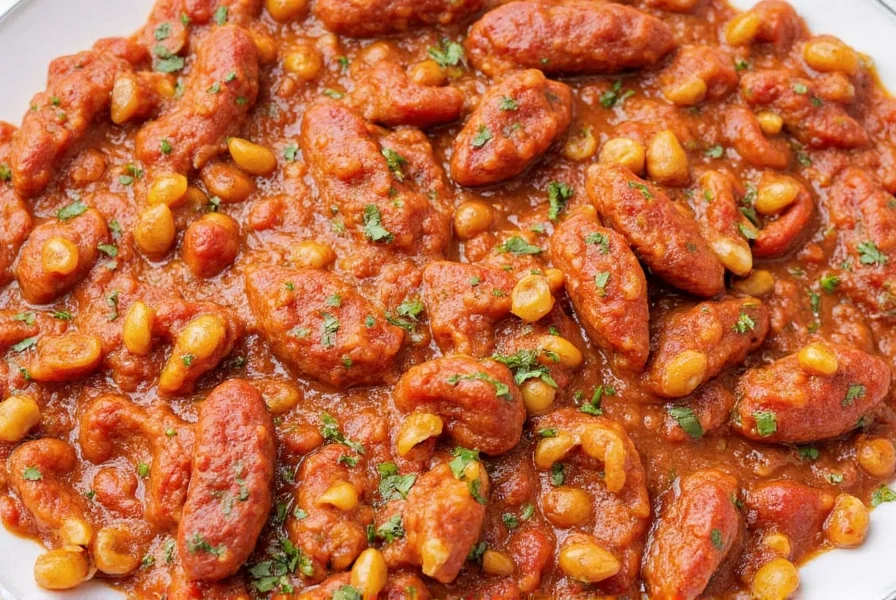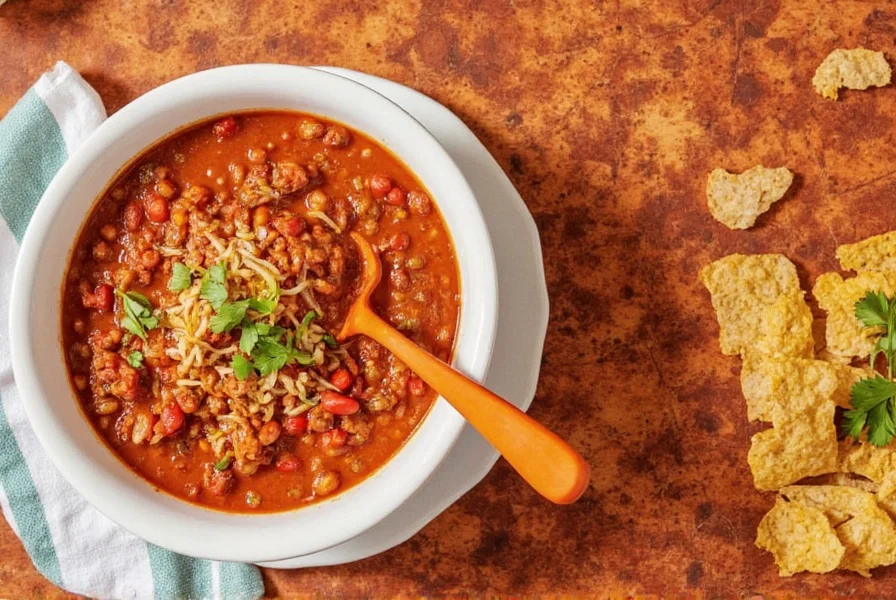| Category | Top Pairings | Why They Work |
|---|---|---|
| Starchy Bases | Cornbread, Rice, Baked Potatoes | Absorb broth, add heartiness, balance spice |
| Cooling Elements | Sour cream, Avocado, Cheese | Counteract heat, add creaminess |
| Crunchy Textures | Tortilla chips, Diced onions, Slaw | Provide contrast to soft chili texture |
| Fresh Accents | Lime wedges, Cilantro, Jalapeños | Enhance flavor complexity, brighten dish |
Classic Chili Accompaniments Everyone Should Know
When considering what sides go well with chili, traditional pairings have stood the test of time for good reason. Cornbread remains the undisputed champion of chili companions, with its slightly sweet flavor and crumbly texture perfectly complementing the savory, spicy notes of chili con carne. The cornmeal's natural sweetness creates a beautiful contrast to the heat, while its structure holds up well when dipped or crumbled into the stew.
Rice serves as another excellent base for chili, transforming it into a more substantial meal. Whether you choose white, brown, or cilantro-lime rice, this simple addition stretches your chili further while providing a neutral canvas that lets the chili's complex flavors shine. For authentic Texas-style chili, many purists serve it over a bed of fluffy white rice with minimal additional toppings to honor the "bowl of red" tradition.

Fresh Elements That Balance the Heat
Understanding what to serve with beef chili requires attention to temperature and texture contrast. Cool, creamy elements like sour cream or plain Greek yogurt provide immediate relief from spicy components while adding richness. The dairy's fat content binds with capsaicin (the compound that makes chili peppers hot), effectively neutralizing some of the burn.
Diced white onions offer a sharp, clean bite that cuts through the richness of meat-based chili. For those who prefer milder onion flavor, shallots provide a more delicate alternative. Avocado or guacamole brings buttery richness that complements both vegetarian and meat chili recipes, while adding healthy fats that help moderate the digestive impact of spicy foods.
Lime wedges represent one of the most transformative additions to your chili experience. A generous squeeze of fresh lime juice just before eating brightens all the flavors and adds a subtle acidity that balances the dish's inherent richness. This simple technique works especially well with bean-based or vegetarian chili recipes that might otherwise taste flat.
Hearty Sides for Complete Meals
When planning what bread goes with chili, look beyond basic cornbread. Biscuits, particularly cheddar cheese biscuits, provide a satisfying alternative that soaks up chili beautifully. For gluten-free options, consider plantain chips or sweet potato slices roasted until crispy.
Baked potatoes offer a substantial base that transforms chili into a complete meal. Simply split a russet potato down the middle, fluff the insides, and ladle your chili generously over top. The potato's earthy flavor and fluffy texture create harmony with the chili's robust profile.
Coleslaw provides an excellent counterpoint to spicy chili, with its cool creaminess and slight sweetness. A vinegar-based slaw works particularly well with Cincinnati-style chili, while a creamy version complements heartier Texas-style preparations. For a healthier twist, try broccoli slaw or a simple cabbage salad with apple cider vinegar dressing.
Creative Pairings for Adventurous Eaters
Modern interpretations of what to eat with chili have expanded far beyond traditional boundaries. Try serving your chili over nachos for a decadent meal that combines multiple favorite elements. Simply spread tortilla chips on a baking sheet, ladle warm chili over top, add cheese, and broil until melted.
For breakfast enthusiasts, chili over scrambled eggs creates a protein-packed morning meal that keeps you satisfied for hours. This combination works especially well with white chicken chili, where the eggs complement the lighter broth.
International influences have created exciting new pairings. Top your chili with kimchi for a Korean-inspired twist that adds fermented complexity, or try serving it alongside naan bread for an unexpected but delightful fusion. Mediterranean-inspired sides like cucumber salad or tzatziki sauce provide refreshing contrast to spicy preparations.

Beverage Pairings That Complete the Experience
The right drink can elevate your chili meal from good to exceptional. Beer remains the classic choice, with amber ales and porters providing malty sweetness that balances heat. For non-alcoholic options, agua fresca (particularly watermelon or hibiscus varieties) offers refreshing sweetness without overwhelming the palate.
Cold milk or buttermilk makes an unexpectedly effective pairing, as the casein protein binds with capsaicin to reduce the burning sensation. For wine lovers, a medium-bodied Zinfandel or GSM blend (Grenache-Syrah-Mourvèdre) complements the smoky, spicy notes in most chili recipes.
Building Your Perfect Chili Meal
When planning your chili meal, consider creating balance through the five elements of taste: spicy (from the chili itself), sweet (cornbread or sweet potato), sour (lime or vinegar-based slaw), salty (cheese or chips), and umami (the deep savory notes in well-made chili).
For casual weeknight dinners, keep it simple with just one starch and one topping. For special occasions or game day gatherings, offer a full chili bar with multiple topping options so guests can customize their bowls. Always consider dietary restrictions when serving chili to groups - having gluten-free, vegetarian, and dairy-free options ensures everyone can enjoy the meal.










 浙公网安备
33010002000092号
浙公网安备
33010002000092号 浙B2-20120091-4
浙B2-20120091-4